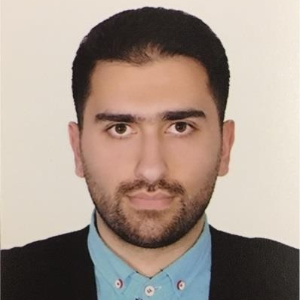Title : Spilled oil sorption from caspian sea water by modified nano graphenes
Abstract:
Spilled oil sorption, which was explored from oilfield in Caspian Sea, by Graphene/Chitosan Nano composite (GC Aerogel or GC) and Exfoliated Graphite (EG), was investigated. GC was prepared according to the modified Hummers method and graphite was exfoliated through the reaction of graphite- CrO3 intercalation compounds. GC grains Pyrolysis at elevated temperatures (25 Co – 800Co) in an inert atmosphere was done and the grains at 700 Co was found as the best absorbent. EG was prepared at ambient temperature.
The obtained absorbents were characterized by Fourier transform infrared spectrometer (FT-IR), Brunauer- Emmett-Teller (BET), Energy-dispersive X-ray spectroscopy (EDS), scanning electron microscopy (SEM), RAMAN spectroscopy and X-ray Diffraction (XRD). Graphene with chitosan and exfoliated graphite absorbed oil sample from aqueous solution to a great extent due to increasing total pore volume in their structure in comparison with simple graphite.
Absorption capacity was investigated by response surface methodology (RSM) using design expert data analysis. RSM model fitting and its validation was discussed and confirmed (R2GC: 0.9885 and R2EG: 0.9976). Identified parameters (weight of absorbent and oil) were investigated by RSM using Perturbation diagram, contour and 3D surface response plots and the maximum absorption ratio were 48.2 gr oil/gr GC and 27.6 gr oil/gr EG.
The finding presented herein indicated that GC and EG were successfully used in oil absorption due to synthetized easily, low weight and high sorption performance.
Audience Take Away Notes:
- Oil spills are both environmentally damaging, and tend to be extremely difficult to clean up. From 1960 to the present, there have been major spills, involving 10,000 or more gallons of oil, in 112 countries, with 267 major oil spills in the Gulf of Mexico alone, and 127 in the Mediterranean Sea. Illustrating the type of environmental impact that is often associated with these spills, in the year 2000 a tanker spill resulted in 20,000 penguins becoming covered in oil, and an additional 20,000 having being to be relocated from their breeding grounds. With his research on the oil absorption properties of GC and EG, Dr. Ghasemi has identified and characterized more effective and efficient compounds for oil spill recovery and cleanup efforts, making it easy to see that his research is widely applicable, and highly valuable, on a global scale


